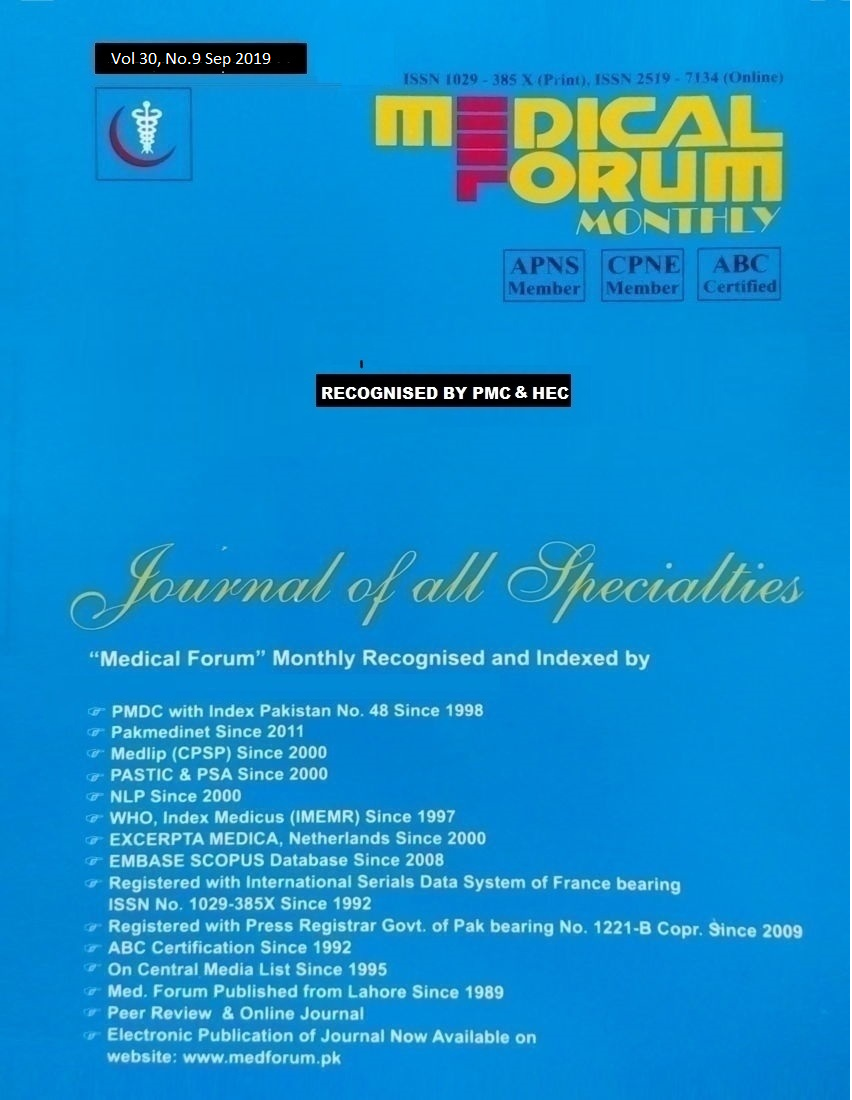
5. Viral Hepatitis B and C in Hemodialysis Patients: A Study from Khyber Pakhtunkhwa, Pakistan
Mufti Baleegh-ur-Raheem Mahmood1, Ahmad Zeb Khan1, Najmuddin2, Irfan Mirza3,
Fazli Subhan2 and Rahmat Ali Khan4
ABSTRACT
Objective: Viral hepatitis has high prevalence in hemodialysis dependent patients. We aimed to find the prevalence of viral hepatitis B and hepatitis C in hemodialysis dependent patients of Khyber Pakhtunkhwa (KPK), Pakistan. This study was also directed to assess the basic infection control measures practiced in different dialysis units of
the region.
Study Design: Descriptive / cross-sectional study.
Place and Duration of Study: This study was conducted at the multiple hemodialysis centers of KPK, Pakistan, conducted from April 2017 to March 2018.
Materials and Methods: It was a survey of the hemodialysis patients in multiple hemodialysis centers of KPK. The study involved obtaining information from each dialysis center regarding the number of patients positive for viral hepatitis. Centers were also asked to report the measures adapted by them regarding infection control and monitoring of their patients.
Results: A total of 10 centers reported their data. Of the total population of 953 dialysis dependent patients, 169 (17.7%) patients were HCV positive, 31 (3.3%) patients were hepatitis B positive, and 08 (0.8%) patients were positive for both hepatitis B and C. Therefore a total of 208 (21.8%) patients were positive for markers of viral hepatitis B and C. Nine centers reported 03 monthly screening for viral markers but None of the centers reported using PCR based testing. Only 01 dialysis center reported adequate surface disinfection after each and every cycle. Majority of centers reported adequate internal machine disinfection practices (07 centers performing machine rinsing after every cycle of hemodialysis and 09 centers performing machine disinfection every day or every week). None of the centers reported re-use of dialyzers. Only 36 (55.4%) of the total 65 dialysis technicians working in these 10 centers were reported to be vaccinated against hepatitis B infection.
Conclusion: We conclude that our dialysis centers have a higher prevalence of viral hepatitis. Inadequate general infection control measures especially inadequate Surface disinfection can prove to be important risk factors for transmission of viral hepatitis among hemodialysis patients.
Key Words: Hemodialysis, End Stage Renal Disease (ESRD), Viral Hepatitis, Hepatitis B, Hepatitis C.
Citation of articles: Mahmood MBR, Khan AZ, Najmuddin, Mirza I, Subhan F, Khan RA. Med Forum 2019;30(9):15-19.
